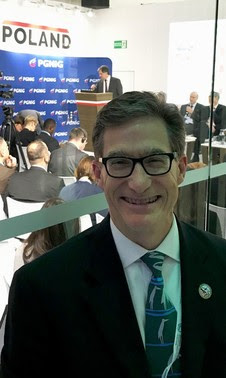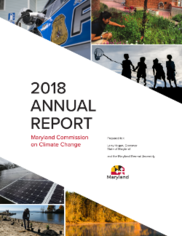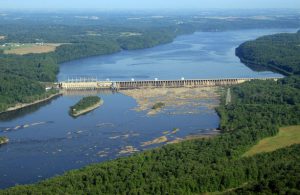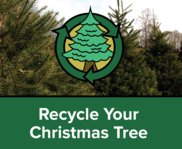eMDE: CLEAN AND GREEN IN 2018
THE LATEST FROM THE MARYLAND DEPARTMENT OF THE ENVIRONMENT

CLEAN AND GREEN IN 2018
Out with the old and in with the new, but not before having a quick last look at important state and regional environmental actions over the past year while making a New Year’s resolution for an even cleaner and greener 2019. As in the past, our future progress for the environment and public health will require strong and balanced actions based on science, collaboration and innovation.
CLIMATE CHANGE
“A heightened sense of urgency” is the phrase that jumps off the page of the bipartisan Maryland Commission on Climate Change annual report for 2018. That urgency is needed to build upon Maryland’s impressive and steady progress in fighting climate change. Maryland – which adopted greenhouse gas reduction goals significantly stronger than those in the Paris climate accord – continues to reduce GHG emissions, transition to cleaner and healthier environmental solutions, increase local resiliency and preparedness and improve scientific understanding and public awareness.
 In 2018, I was honored to represent Governor Larry Hogan at two important climate change events: the Global Climate Action Summit in September in San Francisco and the 24th Conference of the Parties (COP24) convention last month in Poland. These gatherings were chances to share strategies, meet with potential new partners and underscore that states are leading the way on combating climate change. They were chances to highlight the efforts of the 17-state U.S. Climate Alliance – which Maryland joined in 2018 – along with the nine-state Regional Greenhouse Gas Initiative and Governor Hogan’s environmental record, including clean car rules and incentives and the phase out of the manufacture and use of the super polluting greenhouse gas hydrofluorocarbon (HFC). The message is clear: Maryland and other U.S. states are more committed than ever to climate action based on science and smart environmental and economic policies.
In 2018, I was honored to represent Governor Larry Hogan at two important climate change events: the Global Climate Action Summit in September in San Francisco and the 24th Conference of the Parties (COP24) convention last month in Poland. These gatherings were chances to share strategies, meet with potential new partners and underscore that states are leading the way on combating climate change. They were chances to highlight the efforts of the 17-state U.S. Climate Alliance – which Maryland joined in 2018 – along with the nine-state Regional Greenhouse Gas Initiative and Governor Hogan’s environmental record, including clean car rules and incentives and the phase out of the manufacture and use of the super polluting greenhouse gas hydrofluorocarbon (HFC). The message is clear: Maryland and other U.S. states are more committed than ever to climate action based on science and smart environmental and economic policies.
In 2018, Governor Hogan signed the Regional Greenhouse Gas Initiative Extension Act, which reaffirms Maryland’s strong commitment to the multi-state, regional partnership combating climate change known as RGGI. We are proud of our role in strengthening, extending and expanding the size and reach of RGGI, which is on track to gain two more states, Virginia and New Jersey, in the coming year. We shared with the world that RGGI is cutting carbon pollution at power plants in half while generating billions of dollars for cleaner energy and healthier communities, including more than $600 million in revenues for our state alone over the last 10 years.
Maryland also continues to oppose efforts to repeal and replace the federal Clean Power Plan unless the replacement is as effective and enforceable as RGGI. And the Hogan administration is urging federal environmental regulators to leave the current greenhouse gas emissions standards for light-duty vehicles in place.
Last month, Maryland joined a multi-state coalition that will design a regional low-carbon transportation policy proposal that would cap and reduce emissions and invest the proceeds into a low-carbon transportation infrastructure. The program’s goals, in addition to reducing climate changing pollution, include creating economic opportunity.
 The Maryland Commission on Climate Change report, the product of another year of science-based, bipartisan problem solving, sets the table for more progress in 2019. More emphasis is now needed on finding “game changers” – additional, bold innovations in energy, transportation, agriculture and natural resources management that will allow Maryland to meet its climate goals while ensuring positive impacts to jobs and the economy and advance our shared commitment to public health and equity. In the coming weeks, the Maryland Department of the Environment will issue a draft plan to meet our greenhouse gas reduction goals. We will get feedback on that draft for a final plan, due at the end of this year.
The Maryland Commission on Climate Change report, the product of another year of science-based, bipartisan problem solving, sets the table for more progress in 2019. More emphasis is now needed on finding “game changers” – additional, bold innovations in energy, transportation, agriculture and natural resources management that will allow Maryland to meet its climate goals while ensuring positive impacts to jobs and the economy and advance our shared commitment to public health and equity. In the coming weeks, the Maryland Department of the Environment will issue a draft plan to meet our greenhouse gas reduction goals. We will get feedback on that draft for a final plan, due at the end of this year.
CLEAN WATER AND THE CHESAPEAKE BAY
Maryland is also leading the way in restoring the Chesapeake Bay and working closely with our many federal, state and local partners. Governor Hogan’s fiscal year 2019 budget invests a record $1.2 billion in state funds toward wide-ranging Chesapeake Bay restoration efforts, continuing the administration’s commitment to protecting Maryland’s most precious natural asset. With more than $4 billion toward restoration efforts since taking office, no governor in state history has invested more in his first four years. The Chesapeake Bay is the cleanest it has been in 25 years, as shown by University of Maryland Center for Environmental Science report cards.
 Still, more work is needed to meet our goals. One key is to fix problems stemming from the Conowingo Dam. Last year, MDE issued a Water Quality Certification with special conditions for the proposed relicensing of the dam. As part of a comprehensive strategy for Bay restoration, the certification requires Exelon to reduce water pollution that flows from the dam to the lower Susquehanna River and, eventually, the bay. It also requires Exelon to improve its management of debris that collects at the dam, including conducting a feasibility study on a solar-powered trash collection wheel.
Still, more work is needed to meet our goals. One key is to fix problems stemming from the Conowingo Dam. Last year, MDE issued a Water Quality Certification with special conditions for the proposed relicensing of the dam. As part of a comprehensive strategy for Bay restoration, the certification requires Exelon to reduce water pollution that flows from the dam to the lower Susquehanna River and, eventually, the bay. It also requires Exelon to improve its management of debris that collects at the dam, including conducting a feasibility study on a solar-powered trash collection wheel.
Maryland is also working with its partners in bay watershed states to develop a cleanup strategy – known as a Watershed Implementation Plan – specifically for the dam. And Maryland and the other bay states will also work this year on Phase III Watershed Implementation Plans for each state to meet our 2025 water goals.
In collaboration with our federal delegation, the Hogan administration has fought proposed cuts in federal spending on bay restoration — and won. In 2018, MDE issued renewed permits for three power plants that require them to comply with updated, more stringent federal limits on wastewater discharges to the Patuxent and Potomac rivers.
The National Governors Association’s Water Policy Institute, co-chaired by Governor Hogan, met in September in San Francisco. The event included an excellent series of roundtables and workshops to advance integrated, sustainable water policies. It was also an opportunity to share with other states our comprehensive stormwater pollution and green infrastructure strategies.
In that spirit, Maryland’s water quality trading program is gaining momentum in time for the new year. Counties are taking steps to use the program to help them comply with their stormwater discharge permits. And the oyster industry may soon play an important role in the program. It is vital to bring more players from both the the public and private sectors to the table to find cost-effective clean water solutions.
CLEAN AIR
Maryland has made significant progress in improving our air quality in recent years, but we have more work to do to meet all health-based standards. In addition to the fight to maintain federal vehicle emissions standards, Maryland is fighting for the ability to continue to adopt clean car standards that are stronger than the federal government’s. In fact, our final regulatory action of the year, on December 31, was an emergency rule to ensure our state could stay on pace with California and several other clean car states that don’t want to be impacted by potential federal rollbacks.
2018 also included major enforcement news regarding clean air and vehicle emissions testing violations. We announced a $33.5 million settlement with Volkswagen AG and its affiliates, Audi AG and Porsche AG, relating to the auto manufacturers’ use of “defeat devices” in violation of Maryland’s environmental laws. Also, MDE released a draft spending plan that would invest over $75 million in settlement money from the Volkswagen defeat devices federal case toward the deployment of electric vehicle charging infrastructure and the replacement of old, dirty diesel engines with clean diesel engines and other strategies to help improve air quality.
We also continue to reduce air pollution at the Port of Baltimore. In 2018, MDE, along with the Maryland Department of Transportation and the Port, hosted the America 2018 GreenPort Congress in Baltimore. The convention was attended by more than 170 delegates and panelists from 14 countries.
And we continue to press for actions to reduce the air pollution that blows into Maryland from upwind states. Maryland was one of several states that petitioned the U.S. EPA to expand the Ozone Transport Region by adding nine states to reduce emissions from out-of-state sources that affect Maryland. Unfortunately, EPA denied this petition. Maryland and other states are challenging this decision. Also, Maryland has appealed EPA’s denial of our comprehensive, science-based petition to require certain power plants in those states run their air pollution controls throughout the summer (as Maryland power plants are required to do). Clean air matters to Maryland and the Chesapeake Bay and we’re committed to winning this case.
LEAD POISONING PREVENTION AND PUBLIC HEALTH
 In October we released a report that showed childhood lead poisoning cases in Maryland decreased the prior year to the lowest levels since data has been collected in connection with the state’s 1994 lead law. The historically low levels were reached even as blood lead testing rates increased significantly under the state’s universal testing initiative. Lead has no boundaries but we are making real progress in protecting children from lead poisoning.
In October we released a report that showed childhood lead poisoning cases in Maryland decreased the prior year to the lowest levels since data has been collected in connection with the state’s 1994 lead law. The historically low levels were reached even as blood lead testing rates increased significantly under the state’s universal testing initiative. Lead has no boundaries but we are making real progress in protecting children from lead poisoning.
In 2018, schools across Maryland began testing their drinking water for lead as required by state law. MDE strongly supported the bill that tasked the department with overseeing this testing, and we will continue to do just that in the coming year. Ensuring that Maryland students have safe drinking water is a priority for MDE, and this goes hand-in-hand with Maryland being a national leader in reducing childhood lead poisoning from paint in rental units. With universal testing, strong enforcement and innovative partnerships we can eliminate this entirely preventable disease.
MDE also works to protect public health by overseeing beach monitoring, evaluating the quality of shellfish waters and providing fish consumption advisories. In 2018 we launched an interactive map that provides modernized, user-friendly information on fish consumption advisories. The map underscores the Hogan administration’s focus on customer service and environmental quality.
January is Radon Awareness Month. Radon is the second leading preventable cause of lung cancer. Radon exposure is a health hazard with a simple solution: test your home today.
SUSTAINABILITY
We are increasingly focused on reducing food waste and beneficially reusing scraps for energy and the environment. In October, MDE hosted the Mid-Atlantic Food Recovery Summit, fostering innovations and partnerships to improving food recovery in the region. MDE is leading a study group and is required by law to make recommendations relating to the diversion of yard and food waste and other organic materials from landfills.
 When it comes to reduce, reuse and recycle, young Marylanders show that they get it. In November, First Lady Yumi Hogan joined me at MDE’s 17th Annual “Rethink Recycling” Sculpture Contest. The contest promotes recycling and creativity among high school students.
When it comes to reduce, reuse and recycle, young Marylanders show that they get it. In November, First Lady Yumi Hogan joined me at MDE’s 17th Annual “Rethink Recycling” Sculpture Contest. The contest promotes recycling and creativity among high school students.
Maryland businesses also get it. Last year, MDE announced the addition of the Maryland Green Registry program’s 500th member. The businesses and organizations that make up the Green Registry do tremendous work in protecting our state’s air, land and water. They have also saved millions of dollars through sustainable practices like energy efficiency, water conservation and waste reduction. Gaining a 500th member was an important milestone for the program, which is gaining steam and growing partners.
A FINAL THOUGHT
MDE’s mission is to protect and restore the environment for the health and well-being of all Marylanders. Customer service is also a priority of the Hogan Administration. We invite you to share ideas on how MDE can continue to improve our operations and environmental results. Let’s keep building bridges and partnerships in 2019 for a clean and green, healthy and happy state for current and future Marylanders.
In the News
Baltimore Sun
Maryland, eight other states and D.C. agree to work to curb transportation emissions
Maryland has joined in forming a coalition of nine Northeast and Mid-Atlantic states and the District of Columbia that plans to impose regional limits on carbon emissions from cars, trucks, buses and other transportation modes.
Air, Land, Water – Did You Know?
Radon awareness
 January is National Radon Awareness Month and the Maryland Department of the Environment has a full plate of activities to make the public aware of the radioactive gas that is the second leading cause of lung cancer after tobacco smoke.
January is National Radon Awareness Month and the Maryland Department of the Environment has a full plate of activities to make the public aware of the radioactive gas that is the second leading cause of lung cancer after tobacco smoke.
Electronic billboards in metropolitan Baltimore and northern Maryland will be displaying radon awareness messages throughout January. A total of 1,500 radon test kits for houses have been ordered and will be distributed during MDE outreach events in 2019 along with nearly 15,000 educational brochures in both English and Spanish.
Learn more at mde.maryland.gov/radon.
Treecycling
 Each year, more than 40 million Christmas trees are sold in the United States. Do your part for Maryland’s environment by recycling your Christmas tree this year. Recycled Christmas trees can be used for mulch, soil erosion barriers and many other environmentally friendly uses. Learn more about how to recycle Christmas trees in your county on MDE’s website.
Each year, more than 40 million Christmas trees are sold in the United States. Do your part for Maryland’s environment by recycling your Christmas tree this year. Recycled Christmas trees can be used for mulch, soil erosion barriers and many other environmentally friendly uses. Learn more about how to recycle Christmas trees in your county on MDE’s website.
Have an Idea?
Email the Editor
 We’re always looking for ways to make eMDE even better. Here’s a chance to tell us what you think. Have some thoughts on what we can do better or things you’d like to see more of? An idea for a specific story? We want to hear from you. Contact us at editor.mde@maryland.gov.
We’re always looking for ways to make eMDE even better. Here’s a chance to tell us what you think. Have some thoughts on what we can do better or things you’d like to see more of? An idea for a specific story? We want to hear from you. Contact us at editor.mde@maryland.gov.
MDE’s Mission
Our mission is to protect and restore the quality of Maryland’s air, water, and land resources, while fostering smart growth, a thriving and sustainable economy and healthy communities.


